POS development is an essential trend in the market. The emergence of POS systems has changed how people make payments, opening up an era of “contactless payments.” To stay ahead, utilizing POS is crucial for businesses, retailers, and consumers. If you also want to learn and plan POS software development, continue reading this article to explore everything about it: benefits, pricing, features, and the development process.
Benefits of POS Development
Today, when purchasing products or using services, customers often make payments using POS systems. Therefore, point of sale development should be a focal point in business operations.
Beyond payment processing, custom POS software development brings various benefits to businesses, such as:
- Increased sales efficiency: Customers spend less time at the checkout, orders become more accurate, and the need for staff during peak hours is reduced.
- Reduced error rates: POS systems can scan barcodes, read item details, and minimize payment errors.
- Employee management: POS system development facilitates scheduling, task planning, and reporting for employees, making workforce management more efficient. This is especially beneficial for businesses employing part-time or hourly staff.
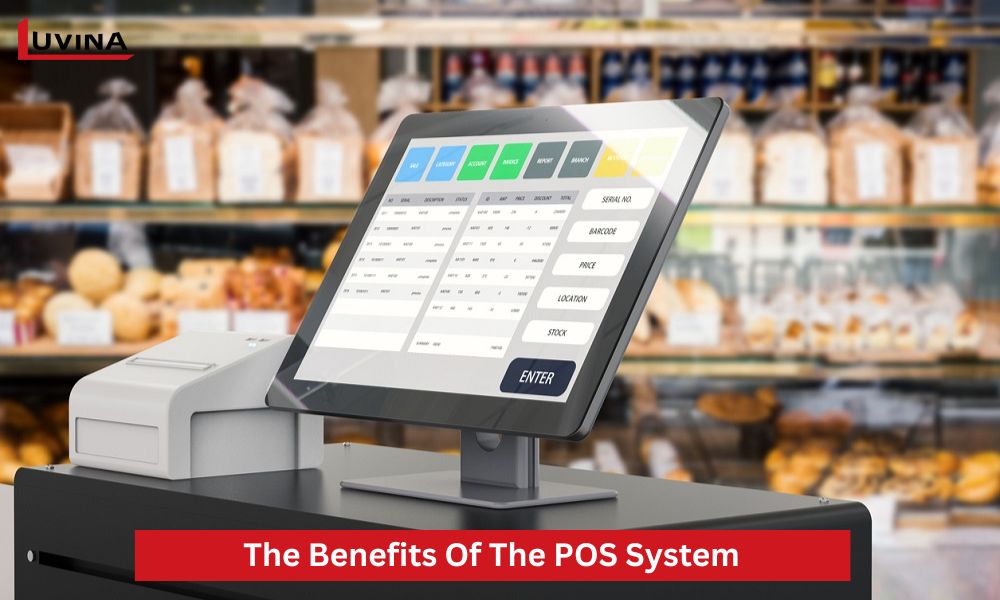
- Ease of use: Despite having many features, POS systems are designed to be user-friendly, making them accessible even to non-technical individuals. Consequently, employee training is quicker and more straightforward.
- Automation of tasks: Instead of manual management, a POS system helps businesses control commissions, inventory, and order reporting more accurately, streamlining business operations.
- Flexible payment options: Through POS application development, businesses can adapt to new payment options in the market. Regardless of the customer’s preferred payment method, the POS system can accommodate, providing a better shopping experience.
- Enhanced data analysis: The POS system can track sales rates, regional performance, and return rates, and analyze this data to evaluate overall sales performance. Accurate data-based reports assist businesses in formulating the most suitable marketing and sales strategies.
- Enhanced security: Data stored in the POS system is always securely protected. Especially when data is stored in the cloud, synchronization processes further ensure data safety. Businesses also have 24/7 access to this secure data.
- Time savings: Beyond reducing checkout time for customers, point-of-sale application development helps businesses save time by automating processes such as inventory management and order processing.
- Cost reduction: A study conducted by Intuit Market Research has shown that POS systems can help businesses reduce costs by up to 10%. This plays a significant role in optimizing overall operational expenses.
Types of Point of Sale System
The POS software system is divided into several types, each with unique characteristics and operating methods. Among them, the following 8 types of POS systems are currently widely used by businesses and retailers:
1. Mobile POS (mPOS)
This POS system can be easily and quickly integrated into mobile devices, such as tablets, and smartphones. It’s a very convenient POS software type that helps monitor sales, manage real-time inventory, and provides many other prominent features. This would be a suitable POS system if the business needs to move around frequently and doesn’t require managing a large inventory.
2. Cloud-based POS (Cloud POS)
This type of POS system operates in the cloud, using data provided by the POS provider. It suits most businesses due to its diverse features and smooth operation. Cloud POS shares many similarities with POS terminals, with the distinction that this system can access the internet and use cloud storage.
3. POS Terminal
Stores, grocery shops, restaurants,… are the places that most need POS terminal software. This system is both affordable, cost-effective, and easy to integrate into any type of framework. POS Terminals are often sold with built-in barcode scanners, cash drawers, etc. Although they operate based on dedicated hardware, POS terminals still use cloud-based software or require internet access.
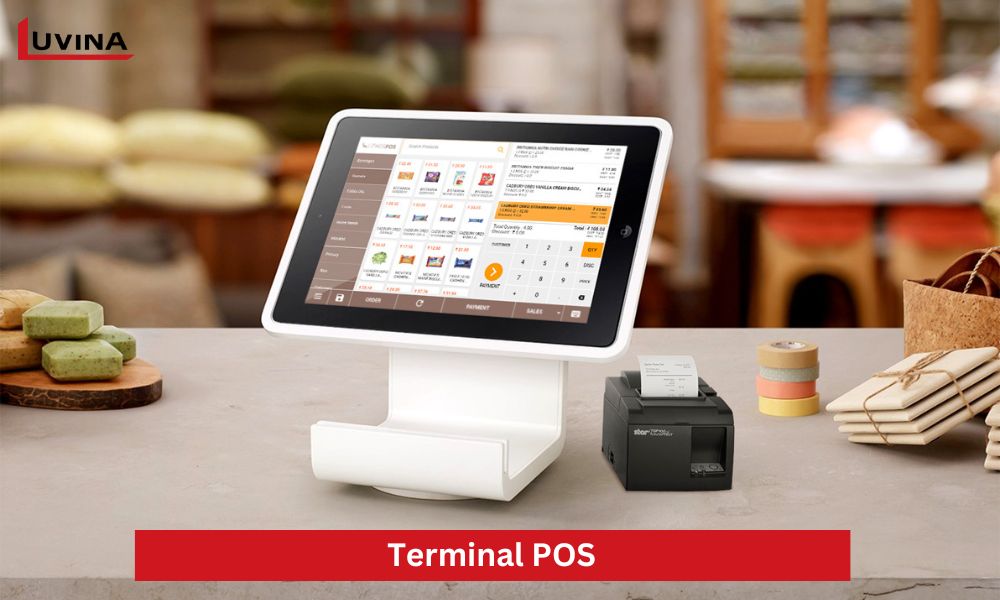
4. Tablet POS
The tablet POS system is the result of Android POS development or iOS POS development. This system is both user-friendly and requires less capital, making it highly favored by businesses. It is usually sold with various hardware components, such as cash drawers, barcode scanners, tablet stands, and some simple applications.
5. Online POS
With online POS, you can use your hardware (PC or tablet). This is one of the most cost-effective POS systems, suitable for businesses selling high-value items with a low sales volume. After developing POS software online, you can log in to the system from anywhere, using any device.
6. Self-service kiosk POS
Self-service kiosk POS systems are developed for specific purposes. For example, a self-service kiosk POS may be designed for customers to purchase tickets, pay for parking, etc. Some large retail stores create tools to help customers look up prices and product availability by developing a point-of-sale system.
7. Multichannel POS
A multi-channel POS system is well-suited for businesses selling in multiple locations (both online and offline). With this system, sales data is integrated across storefronts, social media platforms, and online stores. This approach helps prevent out-of-stock situations as inventory across different sales channels remains synchronized.
8. Open-source POS
This system allows businesses to customize the software interface according to their needs, ensuring that the software functions the way they want. To develop a POS system open-source, you would need support from software engineers. Therefore, this type of POS system is also the most costly. However, an open-source POS system is an optimal choice for large businesses with unique POS system requirements.
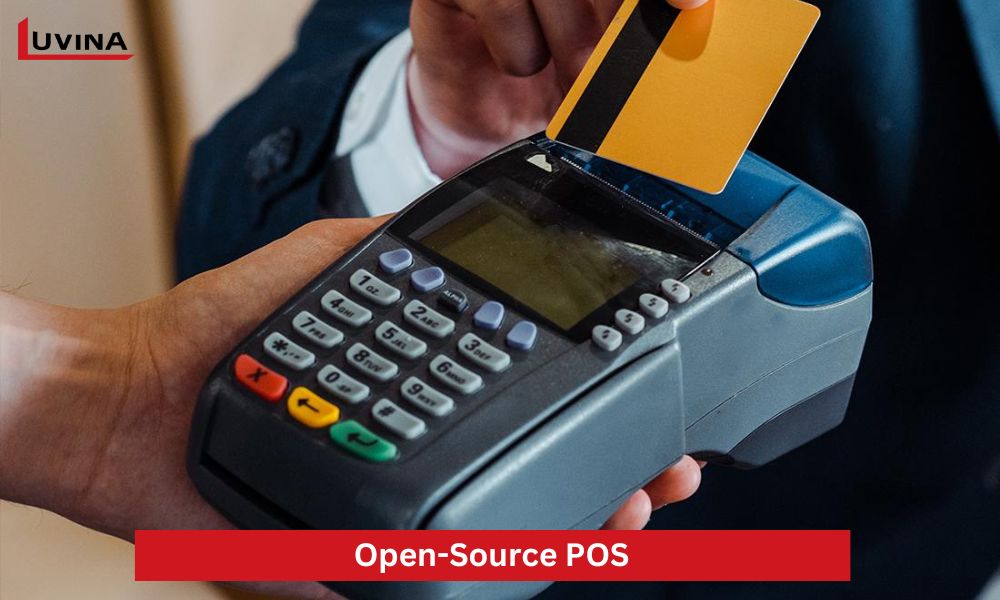
Hardware Components Required For A POS System
POS development enables businesses to efficiently operate and monitor all business activities on a small device. However, to use POS effectively, a typical system “package” often includes several hardware components:
- POS Software: Runs on the POS device, facilitating inventory checks, customer management, and easy report tracking.
- Cash drawer: Stores cash and receipts. The POS system can accurately record the number of times the cash drawer is opened, helping to reduce fraudulent activities.
- Receipt printer: The POS system allows businesses to print their logo on receipts to provide to customers. Receipt printers can produce physical receipts or digital invoices.
- Card reader: Nowadays, customers prefer card payments. Card readers are often included for free when purchasing a POS system.
- Barcode scanner: Widely used in retail stores, it helps customers find product information, such as price, description, and inventory levels.
- Display screen: This screen assists both staff and customers in confirming scanned items, the amount due, promotional information, payment options, etc.
- Scale: Used to weigh and price items.
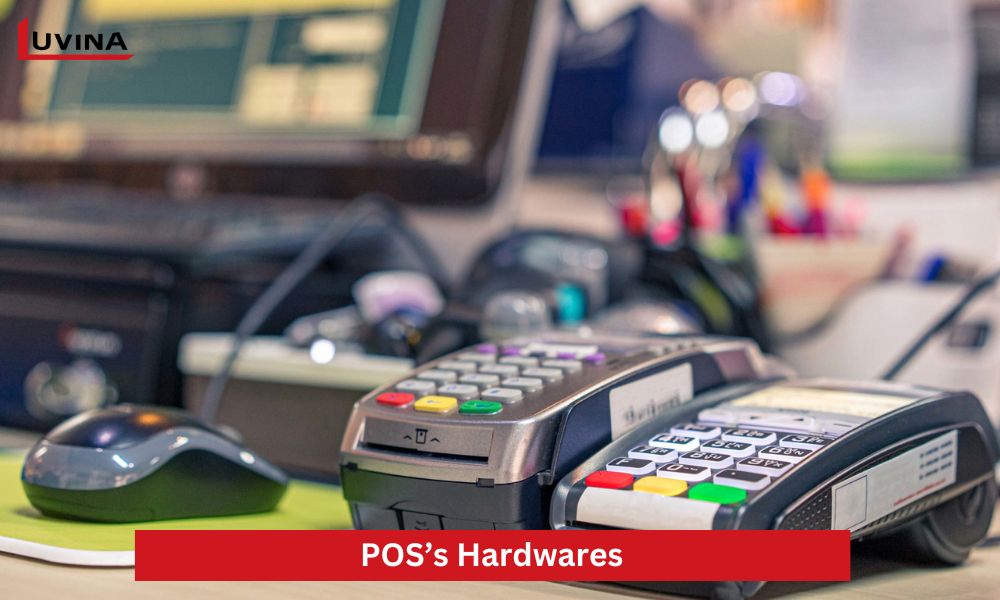
Features In POS Software
It’s not by chance that the POS system is considered a crucial core of business operations. Point-of-sale software development helps businesses manage sales more easily, smoothly, and accurately. To achieve this, POS software needs to integrate several basic and advanced features, including:
- Integration: POS configuration should seamlessly integrate with other modules such as inventory management, time tracking, gift cards, etc. Integration features help reduce errors when transferring data from one system to another.
- Employee management: Control employees’ clock-in and clock-out times, manage work schedules, and calculate employee wages.
- Inventory management: Many businesses require accurate knowledge of inventory levels to address shortage issues. Therefore, POS software development needs to pay special attention to this feature.
- Customer management: Allows for the collection of customer data based on spending patterns.
- Sales reporting and analysis: This enables tracking of product sales, reflecting revenue on each item, making it easier for businesses to identify and focus on top-selling products.
- Mobile device access: Helps manage operations from anywhere, even when away from the physical store.
- Streamlined purchases: Records how the company acquires goods and services, optimizing spending and profits.
- Customer care and relationship management: Assists businesses in enhancing personalized customer experiences by recording detailed purchase information, such as the last purchase date and the total number of purchases.

- Stock management: Aids businesses in saving time on ordering and manually calculating supply levels.
- Security features: Ensures the safety and protection of customer data.
- Reporting: Assists businesses in understanding the activities of various business departments to identify issues (if any) and discover development opportunities.
- Content management: Allows for the addition of columns and fields relevant to the business type.
- Discount and loyalty programs: Enhances the customer experience, turning customers into regular buyers with unique discount programs.
Cost To Develop A POS Software System
It’s not easy to determine how much businesses need to invest in POS development. A basic POS system may require between $40,000 and $50,000 for development. However, if you want POS software development with advanced features, the cost can range from $65,000 to $90,000.
The cost of point-of-sale development depends on factors such as:
- Application development platform
- Basic or advanced features
- Integration with third-party platforms and APIs
- Location of the development team
- Development timeline
The more additional features a business needs, the higher the cost of custom POS software development. The cost of software and hardware can also vary depending on the chosen partner company.
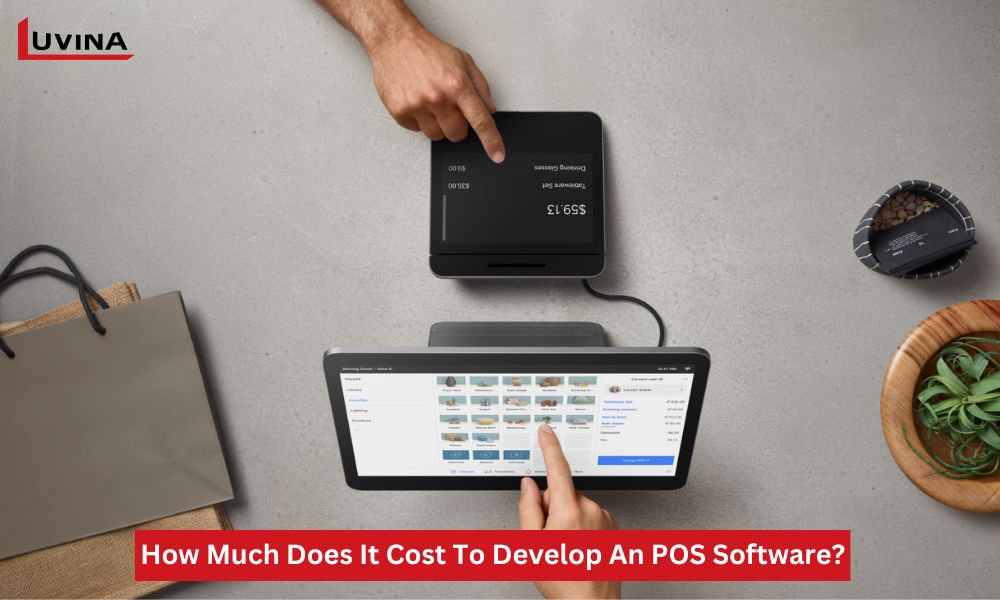
To purchase POS systems, you can choose one of the two payment methods below:
- One-time payment: Not many businesses use this method because it involves a significant upfront cost. However, this payment method can be beneficial in the long term.
- Monthly payments: This is a common payment method today. However, in the long run, you may end up paying more with this method. You can either pay for each usage or pay per subscription.
How Do You Develop Point Of Sale (POS) Software?
Every consulting service company has different working processes. However, fundamentally, point-of-sale software development typically goes through the following steps:
- Step 1 – Identify business needs: Understand the business requirements, estimated budget, and features you want in the POS software.
- Step 2 – Market research: Explore the strengths and weaknesses of existing POS software to develop new software that meets user expectations.
- Step 3 – Collaborate with a software development company: Choose a company with extensive experience in POS system development, high-level expertise, and competitive pricing.
- Step 4 – POS development: Proceed with the development of software based on the needs and desired features identified in Step 1.
- Step 5 – Test POS software: Conduct testing to identify errors, and ensure smooth operation and compliance with laws and regulations.
- Step 6 – Deployment: Begin implementing the software, including hardware installation, staff training, and data migration.
- Step 7 – Continuous maintenance: Software development companies will provide ongoing maintenance and support to address issues (if any), answer queries, and update the software.
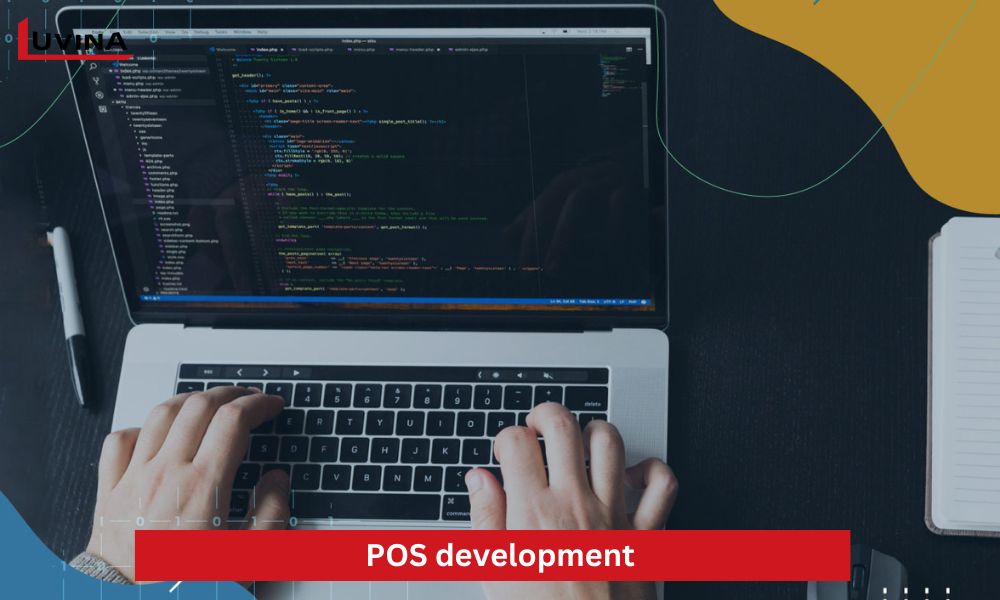
How can Luvina help your business?
With visual and efficient solutions, partnering with Luvina to develop POS software will help optimize your sales operations and enhance customer service.
As a Scan & Go solutions provider, Luvina has successfully implemented numerous POS app development projects. The Scan & Go technology applied by Luvina enables customers to conveniently scan and pay using mobile devices without the need to queue or interact directly with cashiers.
With extensive professional experience, Luvina excels at various stages, such as basic and detailed design, coding, testing, POC, software integration with related applications, etc. The POS system developed by Luvina will assist businesses in inventory management, employee management, CRM, payment processing, sales analysis, and more.
The Luvina team has extensive experience in custom POS software development
POS development requires a careful, detailed plan and process. To ensure a successful development project, collaborate with Luvina – a POS software development company to get the most robust and suitable solution.
Contact Luvina today to optimize your business operations with the most advanced POS software.









Read More From Us?
Sign up for our newsletter
Read More From Us?
Sign up for our newsletter